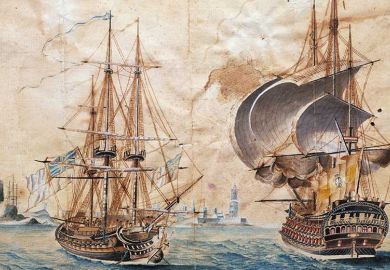The modern image of a pirate is a 17th- or 18th-century swashbuckling Caribbean anti-hero. However, piracy has existed everywhere where there are people who travel by water and people willing to take goods forcefully from others. Rather than considering it as a geographically isolated or chronologically limited phenomenon, Peter Lehr tries to understand what common incentives and experiences underlie it across that long history.
He certainly takes the comparative part of his history seriously: the Baltic, Mediterranean, Caribbean, Arabian and South China Seas all receive attention alongside the Gulf of Guinea and the Indian Ocean. Pirates offers rich description and an abundance of piratical characters readers are unlikely to have met before. Old favourites such as Edward Teach (better known as Blackbeard) show up, but so does the Chinese pirate queen Zheng Yi Sao, the Baltic guild of raiders known as the Victual Brothers and Indian pirate-admiral Kanhoji Angre. This breadth illustrates that, while pirates were not all the same, few were unique. Viking raiders, for example, used parallel tactics to the 15th- and 16th-century Wako pirate gangs operating along Chinese coasts, and were powered by a similar warrior ethos to the one that inspired piracy among 18th- and 19th-century Malay elites.
Pirates seeks to explain what motivates pirates, how they operate, when they flourish and why they persist. The trouble is that the answers turn out not to be very interesting, or at least not very surprising. Pirates themselves seem largely to have been inspired by a combination of need and greed, and occasionally by the cultural value placed on displays of warrior violence. Piracy thrives in places where there is weak or failed state control – on the frontiers of entangled empires, in areas destabilised by civil war – or, alternatively, where there is a state that is willing to co-opt maritime violence for its own ends, as could happen at a local level in ports such as Macao or at a national level as in Elizabethan England. An answer does not have to be complicated to be right, but when so many vivid stories and compelling juxtapositions have been brought together in one place, the reader cannot help but expect some counter-intuitive payoff.
As an expert on terrorism, Lehr may ultimately be most interested in understanding why piracy happens in order to find ways to prevent it. If the motivations and context of piracy are straightforward, the solutions to the problem are not. Piracy persists because pirate ships are small and the oceans are large. Eradicating it would require either hegemonic power (as happened during the age of truly global imperial control in the late 19th and early 20th centuries) or a genuine international coalition, which is difficult to accomplish when some nations benefit from the status quo – or at least believe that they do not suffer from it as much as their rivals. Lehr deftly explains both modern anti-piracy measures and their limitations, as well as the challenges posed by a geopolitical system that facilitates inequality while expanding global trade. Based on his analysis, piracy appears unlikely to be relegated to history any time soon.
Sarah Kinkel, formerly assistant professor of history at Ohio University, is the author of Disciplining the Empire: Politics, Governance, and the Rise of the British Navy (2018).
Pirates: A New History, from Vikings to Somali Raiders
By Peter Lehr
Yale University Press, 272pp, £20.00
ISBN 9780300180749
Published 11 June 2019
Register to continue
Why register?
- Registration is free and only takes a moment
- Once registered, you can read 3 articles a month
- Sign up for our newsletter
Subscribe
Or subscribe for unlimited access to:
- Unlimited access to news, views, insights & reviews
- Digital editions
- Digital access to THE’s university and college rankings analysis
Already registered or a current subscriber?








